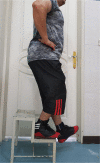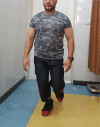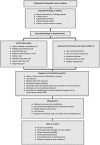Patellofemoral pain in athletes: clinical perspectives
- PMID: 29070955
- PMCID: PMC5640415
- DOI: 10.2147/OAJSM.S127359
Patellofemoral pain in athletes: clinical perspectives
Abstract
Patellofemoral pain (PFP) is a very common problem in athletes who participate in jumping, cutting and pivoting sports. Several risk factors may play a part in the pathogenesis of PFP. Overuse, trauma and intrinsic risk factors are particularly important among athletes. Physical examination has a key role in PFP diagnosis. Furthermore, common risk factors should be investigated, such as hip muscle dysfunction, poor core muscle endurance, muscular tightness, excessive foot pronation and patellar malalignment. Imaging is seldom needed in special cases. Many possible interventions are recommended for PFP management. Due to the multifactorial nature of PFP, the clinical approach should be individualized, and the contribution of different factors should be considered and managed accordingly. In most cases, activity modification and rehabilitation should be tried before any surgical interventions.
Keywords: anterior knee pain; rehabilitation; runners’ knee; sport.
Conflict of interest statement
Disclosure The authors report no conflicts of interest in this work.
Figures








References
-
- Witvrouw E, Werner S, Mikkelsen C, Van Tiggelen D, Vanden Berghe L, Cerulli G. Clinical classification of patellofemoral pain syndrome: guidelines for non-operative treatment. Knee Surg Sports Traumatol Arthrosc. 2005;13(2):122–130. - PubMed
-
- Loudon JK, Gajewski B, Goist-Foley HL, Loudon KL. The effectiveness of exercise in treating patellofemoral-pain syndrome. J Sport Rehabil. 2004;13(4):323–342.
-
- Witvrouw E, Lysens R, Bellemans J, Cambier D, Vanderstraeten G. Intrinsic risk factors for the development of anterior knee pain in an athletic population. A two-year prospective study. Am J Sports Med. 2000;28(4):480–489. - PubMed
-
- Kannus P, Aho H, Järvinen M, Nttymäki S. Computerized recording of visits to an outpatient sports clinic. Am J Sports Med. 1987;15(1):79–85. - PubMed
Publication types
LinkOut - more resources
Full Text Sources
Other Literature Sources
Medical

